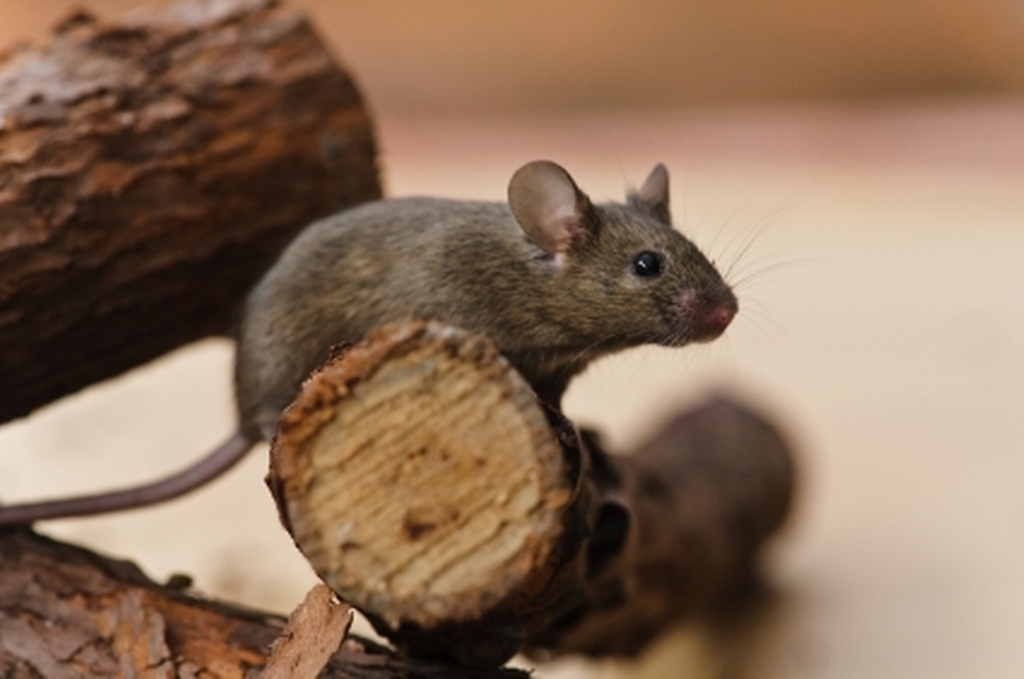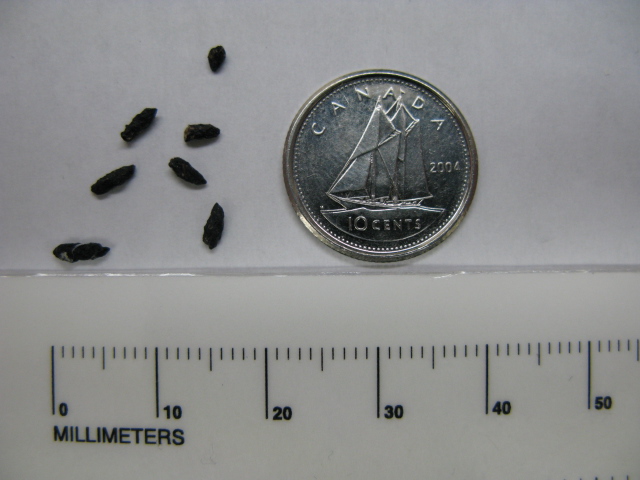
House mouse

The house mouse is a mammal of the rodentia order. It is the most common rodent in cities and villages around the world. Agile and opportunistic, many people underestimate it. Its basic needs are food, shelter and water. Its water requirement is often filled with high moisture food. Mice creep into buildings for shelter and food. If the site offers them both, they stay. They can sometimes go unnoticed for a few weeks or few months and their population can multiply when their needs are met. Once inside the buildings, they move easily from room to room or apartment to another in search of food, nesting materials, new places to nest or simply out for curiosity. The interior walls and the various systems (electrical, plumbing, ventilation) are their ways of movement and communication.
Identification
Adultes:
Head and body: 6,5 to 9,5 cm
Tail: 7 to 10,2 cm
Weight: 12 to 30 grams
Feces : 3 to 6 mm, elongate, pointed ends
Mice have a smooth fur, usually dust gray above and light gray or cream on the belly. Some mice may be light brown to dark gray above.

Signs of infestation
- Droppings. The fresh stools are soft and moist while the old ones are dried and hard. One mouse leaves about 50 droppings per day.
- Damaged food products. Mice prefer seeds or cereals, but can eat everything humans or pets eat.
- Noises in the walls.
- Damaged Materials like electrical wires or cables.
- Smell of mouse urine and droppings.
- Tracks / footprints. Fresh tracks are clear while the old tracks are at least partially obscured by dust.
- Rub marks. They are generally less visible and smaller than those of rats.
- Mouse nest. Inside they often nest in various materials such as insulation and paper.
- Pathways. Mice use the same paths frequently, usually along walls, stacked merchandise, etc. If they are active, the paths are free of dust and cobwebs, with fresh droppings. The paths may or may not be visible.
- Unusual pet behavior.
Biology
- Reach sexual maturity in 35 days.
- Begin to breed when they reach 6-10 weeks.
- Gestation period of about 19 days.
- The average litter consists of 6 pups, approximately 8 times per year.
- The female can have a litter every 45 days.
- The pups are weaned in about 21 days.
- Life expectancy generally less than 1 year.
- A couple of mice can potentially become 3000 mice a year later.
Habits
- When food sources are abundant, they do not go away more than 1.2 to 1.5 m from their nest. If food is scarcer, their territory seldom exceeds more than 6 m in diameter.
- It is difficult to generalize about their favorite food but seeds and cereals are the most widely accepted for the majority of mice populations.
- If the nest is in a cabinet, it is often found in the corners.
- Mice generally run along the walls so they are less exposed.
Effects on the economy and health
- Mice are responsible for millions of dollars of food waste each year in Canada.
- Mice are responsible for power outages, downtime or computer network failures, fires and other structural damage.
- Mice sometimes carry fleas, ticks or mites that can bite humans and pets.
- Mice can spread bacteria like salmonella and parasitic organisms like worms, fleas, lice and mites causing dermatitis (Ornithonyssus Bacot, Laelaps echidnina, Liponyssoides sanguineus, polyplax serrata polyplax spinulosa, Myobiid).
Similar products
See the store
 Skip site navigation
Skip site navigation








